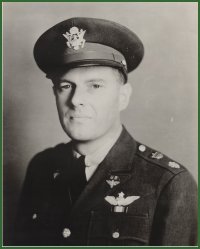Robert Olds | |
|---|---|
 Robert Olds | |
| Birth name | Robert Oldys |
| Born | June 15, 1896 Woodside, Maryland, U.S. |
| Died | April 28, 1943 (aged 46) Tucson, Arizona, U.S. |
| Allegiance | United States |
| Service | Aviation Section, Signal Corps Air Service, United States Army United States Army Air Corps United States Army Air Forces |
| Years of service | 1917–1943 |
| Rank | Major General |
| Commands | |
| Battles / wars | |
| Awards | Distinguished Service Medal Distinguished Flying Cross |
| Spouse(s) | Eloise Wichman Nott
(m. 1921; died 1926)Marjorie Langley
(m. 1928; div. 1930)Helen Sterling
(m. 1933; div. 1940) |
| Children | 4, including Robin Olds |
Robert Olds (June 15, 1896 – April 28, 1943) was a general officer in the United States Army Air Forces, theorist of strategic air power, and proponent of an independent United States Air Force. Olds is best known today as the father of Brig. Gen. Robin Olds, a "triple ace" fighter pilot of World War II and the Vietnam War.[1]
He became an instructor at the Air Corps Tactical School between 1928 and 1931, the crucial period when the theory of strategic bombardment achieved ascendancy within the Air Corps as the most effective use of airpower.[2] With eight colleagues at the ACTS, he was a member of the "Bomber Mafia,"[3] whose influence led to adoption of the theory as the doctrine of daylight precision bombing during World War II. Olds was a persuasive, sometimes controversial figure in the unsuccessful campaign during the 1930s to promote air force independence, but the bombardment doctrine the clique championed ultimately became the foundation for separation from the Army.[4]
Olds was also an accomplished aviator and flight leader. As commander of the 2d Bombardment Group between 1937 and 1940, he led the first operational unit of B-17 Flying Fortresses and put theory into practice by overseeing the development of standard operating procedures for the heavy bomber. Olds showcased the capabilities of the new weapon by leading several highly publicized goodwill flights to South America.
Despite his advocacy for strategic bombing, during the United States' participation in World War II Olds did not command bombers in the field. Instead his major contribution to the war effort was creation and organization of the Air Corps Ferrying Command, whose task was delivery of newly produced aircraft to all parts of the globe, and which eventually became the Air Transport Command and successors. Health problems resulted in his transfer to a training command and led to his early death in 1943.
- ^ Zamzow 2008, p. 1
- ^ Zamzow 2008, p. 19
- ^ Cite error: The named reference
mafiawas invoked but never defined (see the help page). - ^ Shiner 1997, pp. 133–134